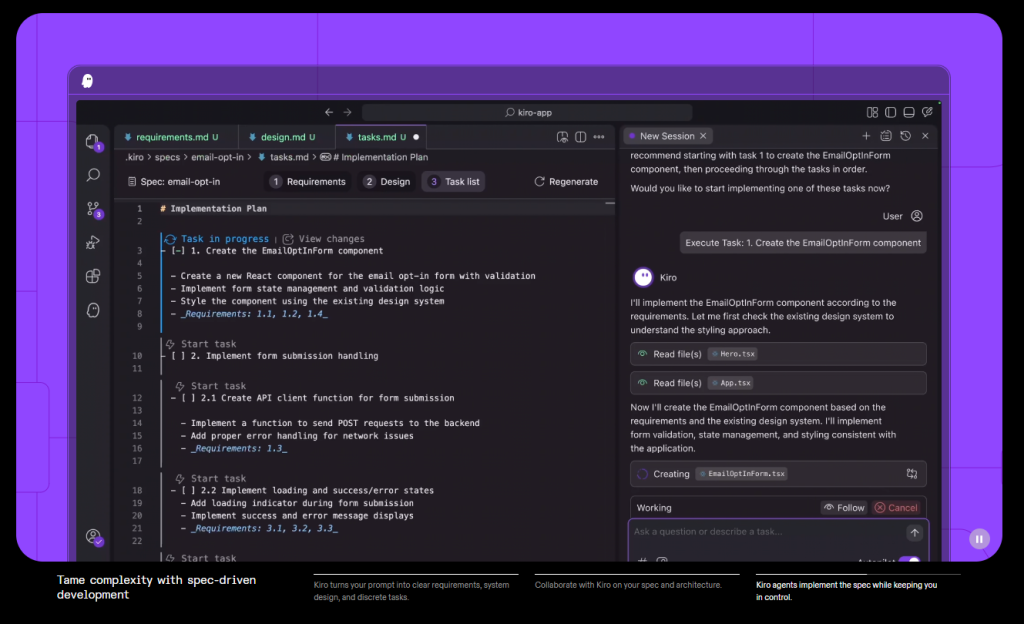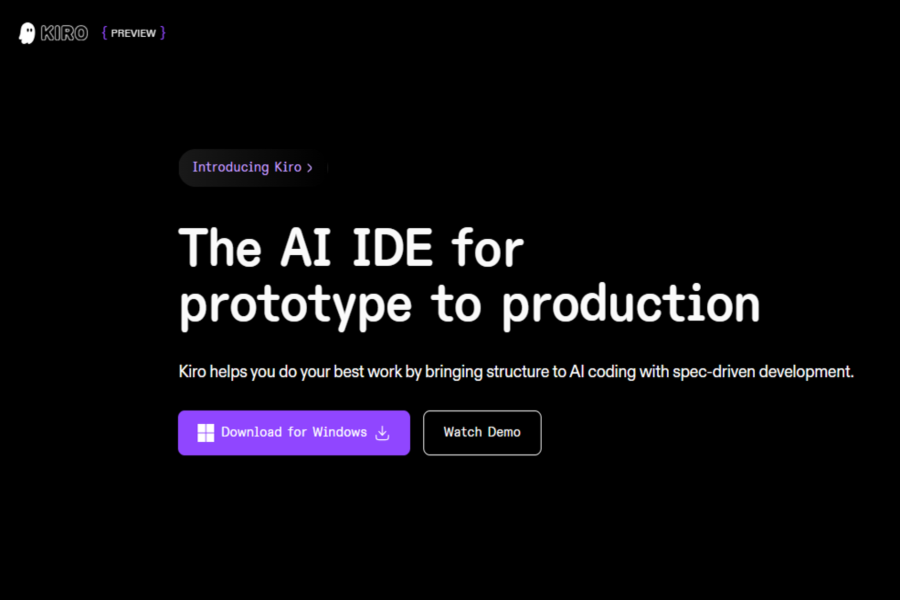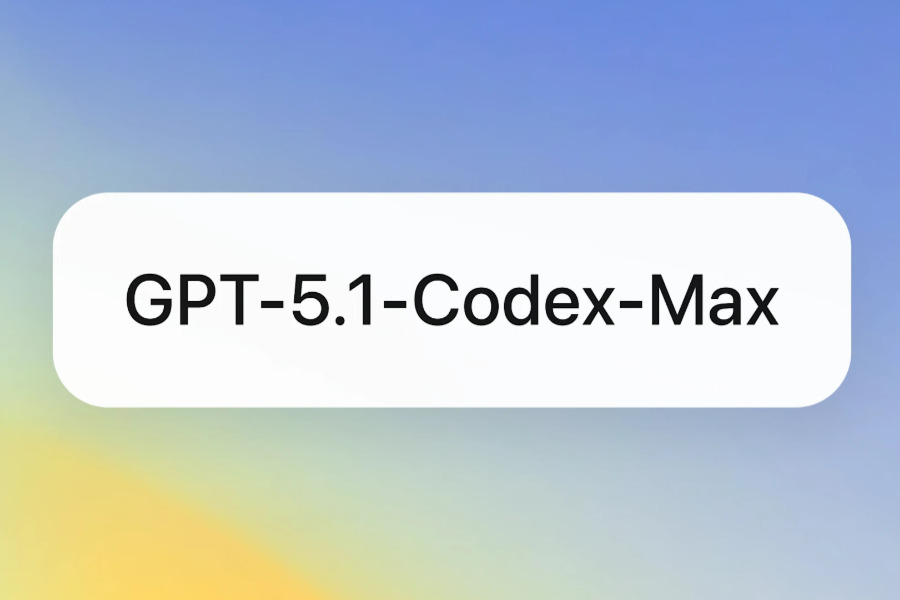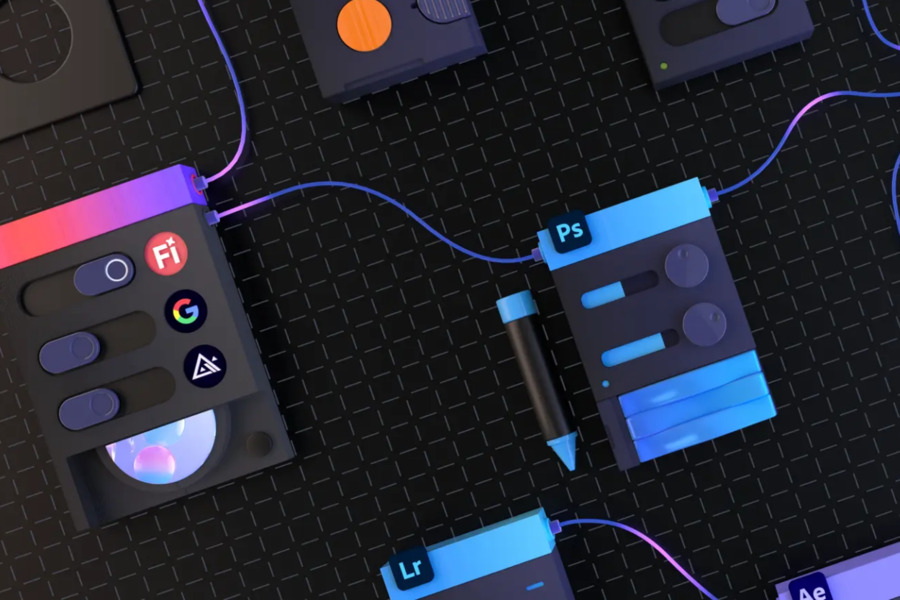Amazon Kiro, officially launched by Amazon Web Services (AWS), is an AI-powered integrated development environment (IDE) designed to revolutionize software development. Unlike traditional coding tools, Kiro introduces “Spec-Driven Development,” a structured approach that shifts the focus from ad-hoc code generation to comprehensive planning before implementation.
Kiro aims to eliminate the inefficiencies of “vibe coding”—where developers rely on intuition rather than clear specifications—by guiding users through a systematic workflow.
From initial prototyping to production deployment, Kiro provides seamless support, ensuring cleaner, more maintainable code with reduced technical debt.
How Amazon Kiro Differs from Existing AI Coding Assistants
While tools like GitHub Copilot and Google Gemini CodeAssist generate code directly from prompts, Amazon Kiro takes a fundamentally different approach. Instead of jumping straight to implementation, it first helps developers create detailed requirements documentation, system designs, and task breakdowns. Only after these specifications are finalized does Kiro generate corresponding code, test cases, and documentation.
For example, if a developer requests, “Add a comment system for the product,” Kiro doesn’t immediately produce code. Instead, it:
- Generates user stories following the EARS (Easy Approach to Requirements Syntax) standard
- Outlines functionalities such as viewing, creating, filtering, and rating comments
- Produces design documents, including data flow diagrams, TypeScript interfaces, database schemas, and API endpoints
This structured methodology ensures that the final code is logical, scalable, and aligned with best practices—addressing one of the biggest pain points in AI-assisted development: technical debt accumulation.
Built on Code OSS: Seamless Compatibility & Flexibility

Amazon Kiro is built on Code OSS, the open-source foundation of Visual Studio Code (VS Code). This means developers can:
- Keep their existing VS Code settings, themes, and Open VSX plugins
- Transition smoothly without workflow disruptions
Additionally, Kiro supports the Model Context Protocol (MCP), allowing integration with external AI models. While Anthropic’s Claude Sonnet 4 and Sonnet 3.7 serve as the default models, AWS plans to expand support for additional AI systems in the future.
Unlike many AWS products, Kiro operates as an independent brand, meaning:
- No AWS account is required (Google login is supported)
- It’s not restricted to the AWS ecosystem
This strategic move suggests Amazon is targeting a broader developer audience, including those outside its cloud platform.
Key Features of Amazon Kiro
Amazon Kiro introduces several groundbreaking capabilities:
1. Agent Hooks: Automated Workflow Triggers
- Automatically runs tasks like unit test generation, integration testing, and documentation updates when code is saved or submitted
- Ensures code remains consistent with specifications
2. Adaptive UI: A Dynamic Developer Experience
- Adjusts the interface based on the developer’s workflow
- Provides an intuitive, context-aware interaction model
3. Multi-Modal Input: From Sketches to Code
- Developers can upload hand-drawn architectural diagrams, which Kiro converts into AWS CDK code
- Bridges the gap between rapid prototyping and enterprise-grade development
How to Access Amazon Kiro
Kiro is currently in free preview, supporting macOS, Windows, and Linux. AWS has outlined future plans for both free and paid tiers, with key assurances:
- Paid users’ code data won’t be used for model training
- Free users can opt out of data collection
AWS executives emphasize that Kiro isn’t just about boosting efficiency—it’s about “redefining how software is built.”
Will Amazon Kiro Succeed in a Competitive Market?
Kiro represents a major evolution in AI-assisted development, moving beyond “quick prototyping” to “production-ready” solutions. Its spec-driven philosophy makes it particularly appealing for enterprise developers managing large codebases.
However, the tool’s complexity could be a hurdle for independent developers or small teams accustomed to simpler AI coding assistants. Amazon will need to balance power with usability in future updates.
As the free preview progresses, real-world adoption and developer feedback will determine whether Kiro can stand out in an increasingly crowded market.
Final Thoughts on Amazon Kiro
Kiro’s launch signals a shift toward structured, AI-augmented software engineering.
If successful, it could reduce reliance on manual debugging and refactoring, making development faster and more reliable.



